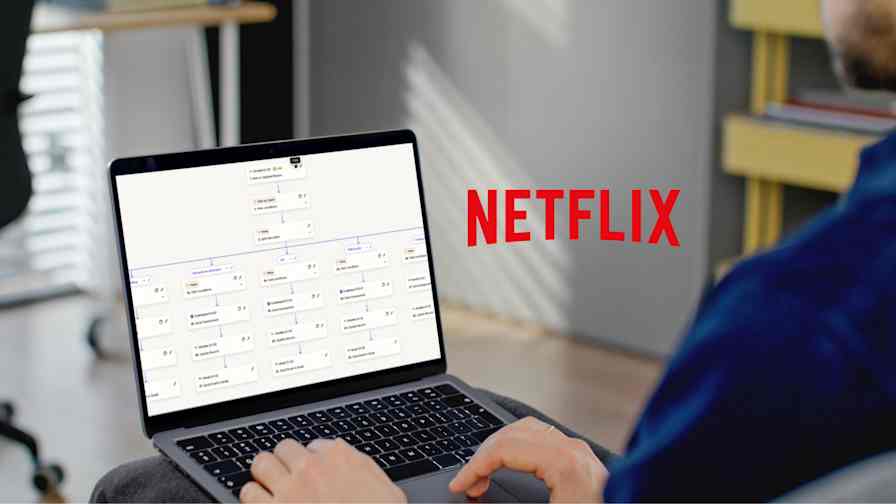Creating something new takes time. A lot of time. The idea might come in a flash, but turning it into a product with customers and revenue takes far, far longer.
Unless you have the right process in place. When Richard Eastes came up with the idea for his lawnmowing-on-demand service GreenSocks, it only took 24 hours start a business—and by the next day, GreenSocks had its first paying customer.
GreenSocks went from daydream to business faster than you could run a Startup Weekend event. There was no development team, no custom payment system, and no back-and-forth about website design. By tying out-of-the-box software pieces with Zapier, Eastes launched a web-app-powered startup without writing a single line of code.
He just glued off-the-shelf software together with automations. Here's how teams everywhere—from bootstrapped crews to the White House's finest—have turned their ideas into realities by using Zapier in lieu of code.
Download our eBook on how to build a prototype.
The Whole is Greater Than the Sum of its Parts
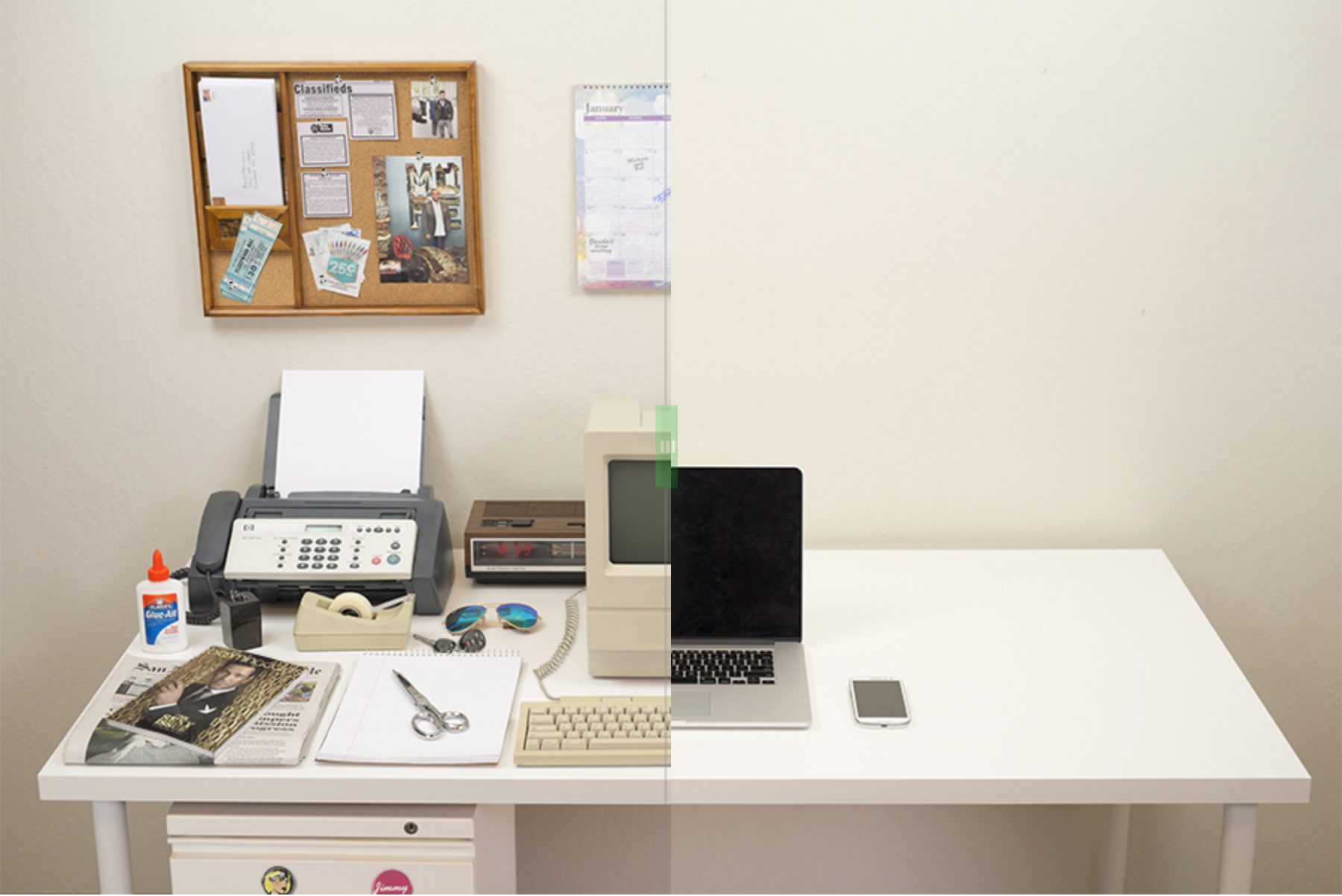
"Software is eating the world," investor Marc Andreessen is fond of saying. Building a store could cost thousands if not millions of dollars in real estate, cash registers, inventory, and more.
Today, anyone with a computer or smartphone could open an eBay or Etsy store for $20 or less, thanks to software. Software has turned phone systems, cash registers, and mass mailings into just another app.
It's not just real-world products, either. Software is also eating software development, as Chris Dixon says. Amazon Web Services, Stripe, Twilio, and other developer services mean you can build software without building every part of your app by hand. All you need to do is tie the services together with a bit of your own code.
And you might not even need to do that, since Zapier can handle that part of the coding for you. With integrations for more than 500 apps—including everything from common tools like , , and to developer tools like , , and —you can move data around and automate process with a Zap that can be set up in minutes.
As SimpleData's Michael Thomas said, "Our language is Zapier—right now we program in Zapier."
You can, too.
Our language is Zapier—right now we program in Zapier.
Michael Thomas, founder, SimpleData
Software Without Coding: 10 Teams Building Startups and Products with Zapier
GreenSocks Offers On-Demand Lawn Care with Zapier

Mowing the lawn isn't most people's idea of a fun weekend afternoon. But unless you want to live in the middle of an unkempt jungle, it's a necessary chore. Yeah, you could hire a mowing service to take care of it, but do you know exactly how large your yard is, and what you want done beyond just trimming the grass?
The idea behind Richard Eastes' GreenSocks is to make ordering lawn care services as simple as ordering a pizza. When you book their service, you tell GreenSocks how large of a party your yard could hold, and they give you an estimated price. It's one of the simplest ways to get your lawn cut.
But such a service requires more than just lawn care professionals and a fleet of mowers. You also need to log each order, dispatch it to a team member, and process the payment.
"I built a prototype within 24 hours of having the idea, using and a form," Eastes says. "Then, I was like, 'Well, now we need to manage all the data that comes in from that form with a back-end.'"
Enter Zapier. Eastes set up a simple Zap that copied the data from Gravity Forms into a spreadsheet. From there, the GreenSocks team filters the data, reviews job requests, and makes sure every thing's handled. Another Zap sends the customer a customized email, letting them know exactly what they ordered, while a final Zap notifies a team member of the new job via SMS.
Create rows in Google Sheets for new Gravity Forms submissions
Send Google Sheets row updates as Twilio SMS texts
Send SMTP emails for new or updated Google Sheets rows
Add new Gravity Forms form submissions to Salesforce as contacts
"It's been four months on, and we're still using that same prototype effectively for our first 140 customers," Eastes says. "It doesn't matter how good you are, you can't build something that quickly by yourself and have it look pretty good and be quite usable."
Those same Zapier automations have continued to work far past their initial prototype phase, and remain the backbone of the GreenSocks infrastructure. "Now that we're transitioning from a prototype to a startup, or something that has revenue, we're still using Zapier because I don't want to have to code things from scratch," Eastes says.
We're still using Zapier because I don't want to have to code things from scratch
Richard Eastes
To help handle their growth, GreenSocks is switching to managing customer data in Salesforce, which only required a few tweaks in their Zap.
"I still haven't even had to think about writing an API to hook a front-end to a back-end," Eastes says. "It just works."
Bart at Work Shoots Customized Videos with Zapier

Sending out personalized messages today is easy. All you need is an email marketing app and a mailing list with names. A few clicks later, and your customers receive an email greeting them by name.
But a personalized video that includes their name, picture and more? That requires a little magic.
Bart Buerman of video production company Bart at Work pulled it off with off-the-shelf apps, Zapier automations, and some tweaking of his own Mac Pro render farm.
You can always tweak something, if it doesn't work you're not exactly terribly invested.
Bart Buerman
It all starts with a Google Sheets form, where prospective clients enter their name and email. Zapier then springs to action, copying the data to a new text file in , where it's synced to Buerman's Mac Pro. From there, the file is picked up by his custom video rendering tools, and turned into a personalized video that's saved back to Google Drive.
A third Zap that uploads the video from Google Drive to , a video hosting platform. Then, a final Zap logs the video data in a Google Sheets spreadsheet, and sends the video—one like the demo video on his site—in an email to the contact.
Add new Google Sheets rows as text files to Google Drive
Automatically upload videos to Wistia from Google Drive
Log Wistia videos into a Google Sheets spreadsheet
"Tools like Zapier are awesome because you can prototype, and if it works, you can just publish it on your website and see what happens," Buerman says. "You can always tweak something, if it doesn't work you're not exactly terribly invested."
With his current setup, the Bart at Work team creates customized video campaigns for each of their clients, focusing on creative aspects without worrying about complex tech solutions. "If you really want to have a smooth way to build new tools, I still think Zapier should be the solution," says Buerman. "I'm not a developer, but I want these things to work."
The White House Simplifies Hiring with Zapier
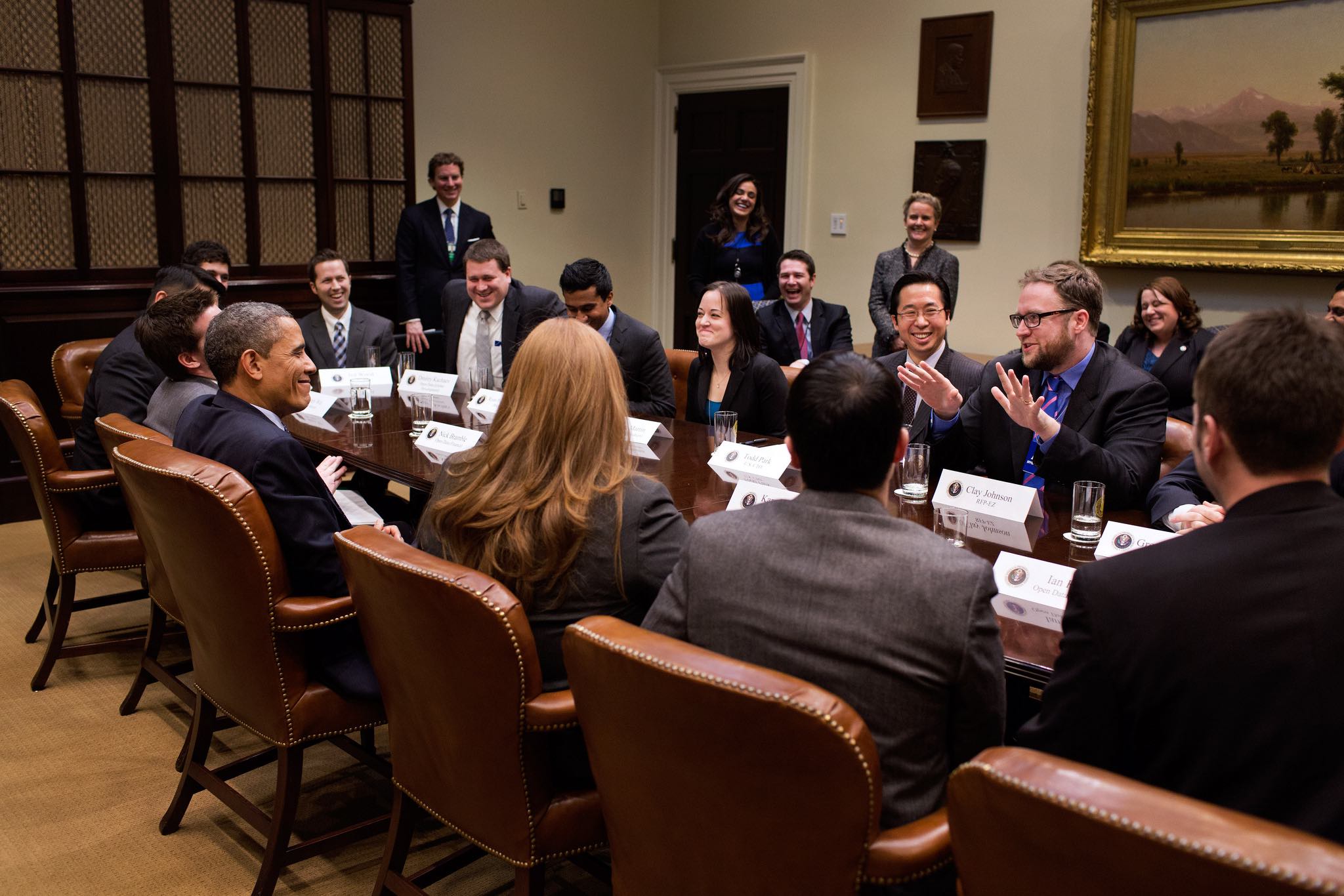
Government has a stodgy reputation in the tech space. The common perception is that they're too weighed down with bureaucracy and red tape to move fast and break things. But in the Obama White House, the Presidential Innovation Fellows team aims to turn that reputation on its head.
Launched in 2012 as a way to bring outside experts and ideas about innovation into the to Washington, the Presidential Innovation Fellows are maintaining a brisk pace. They've already built a digital consultation team for the government, opened up weather satellite data from NOAA, and helped redesign the Veterans Affairs' services. They've modernized government and simplified processes in wide-ranging areas, enough that President Obama turned the Presidential Innovation Fellows program into a permanent part of the government so they can continue to solve America's thorniest tech problems.
But sometimes the most mundane problems cause the most trouble—and for the White House, that tiny problem is hiring.
Hiring for any government position is often a 6- to 9-month process filled with long email threads, communication delays, and confusion. Sometimes, things are delayed simply because no one knows what should be done next.
Government is essentially a sea of processes, and the job of the Presidential Innovation Fellows is finding ways to improve efficiency in them.
Andrew Stroup
That's why Andrew Stroup, director of product and technology for the Presidential Innovation Fellows, simplified the process with five items: a form, a hiring workflow in , Gmail email notifications, a Google Sheets spreadsheet to track data, and Zapier to tie it together.
Now, when their team is working on hiring a new employee, they add a card to a Trello board with a list for each step of the hiring process. One team member is assigned to each list in the Trello board, so when one step of the hiring process is complete, the card is moved to the next list, and Zapier automatically sends that team member an email via Gmail. Zapier also logs the card's info in a Google Sheets spreadsheet, to help the team track how long the card sat in a particular list as an efficiency metric.
Send or receive Gmails emails from new or moved Trello cards
"Government is essentially a sea of processes, and the job of the Presidential Innovation Fellows is identifying ways to improve efficiency in them," Stroup says. "By serving citizens, it should be our responsibility to increase efficiency, saving time and money. That's how the Presidential Innovation Fellows make government better."
Through this simple way of digitizing a manual hiring process, the Presidential Innovation Fellows team was able to quickly build a solution without needing a custom app or code, saving months of expensive programming work.
Footprints Prototypes New Features with Zapier
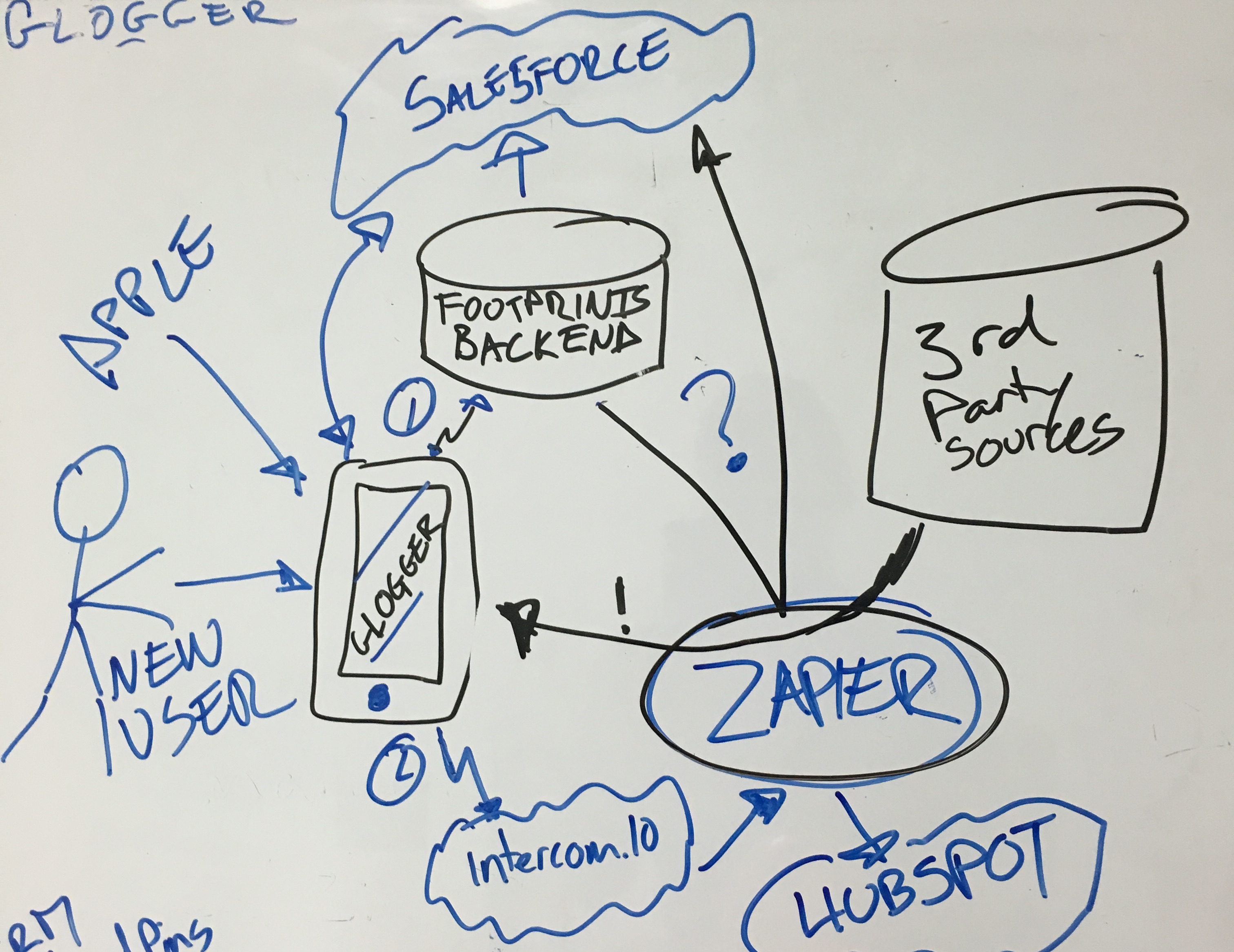
New ideas are just the seed of a product—it takes continuous honing and tweaking to grow them into a business. But each iteration takes time that could otherwise be spent developing your core product.
That's why Footprints turned to Zapier to help their team prototype new features quicker. Their core product—a tool to help Salesforce users discover location-based info about their leads and customers as they're out in the field—has already been built. Now, they're working to hone the initial product and make it more focused on their customers' needs. But before a feature goes live, they need to test it with their users.
"We're thinking creatively about how we can use Zapier to deliver new features more quickly," says Footprints founder Jonathan Friedman. "We can affordably put it out there and see if people start to take advantage of it."
Any time we don’t have to get our developers involved, we are saving time and money.
Jonathan Friedman
At the same time, Footprints is using Zapier to build out their own internal tools. "We use inside of our apps to engage with users and trigger notifications, and we're using for full-blown marketing automation," Friedman says. With Zapier, they can connect the two. "Within minutes, we got these two key customer-engagement systems to talk to each with no developers."
They're also working on adding email notification features to their app, using Zapier's integration instead of building out their own email notifications infrastructure.
Send an email from Mailchimp Transactional when you receive a webhook
"Footprints uses Zapier to stay lean and nimble; we can stay focused on our core-competency of being the best location-aware sales productivity tool for business people, and not worry about building and maintaining integrations," says Friedman. "Any time we don’t have to get our developers involved, we are saving time and money."
Freelanship Reinvented Internships with Zapier

Internships may be one route to a job, but so is freelance work. Lauren Holliday decided the two would be better together, and so the inspiration for her startup Freelanship was born.
It all starts with two Typeform forms: one for companies who need work done by freelancer interns, and another for students who want to intern by doing freelance work. The forms each gather info about the jobs and credentials, and Freelanship matches students to the prospective companies that seem most promising.
I think of Zapier like Internet glue or tape or staples.
Lauren Holiday
"We were getting a ton of sign-ups from anxious students, who would then email me relentlessly about when we'd open shop," says Holliday. "At first, I did all the job matching manually, but it ate up too much of my time. I literally had 0 time for sleep."
Zapier and Google Sheets proved to be the solution Freelanship needed. Zaps automatically entered the job and intern information into Google Sheets spreadsheets, where it's easy to match interns to an ideal job.
Collect new Typeform responses as rows on Google Sheets
"If you're creative then you can hack together any MVP you are dreaming up with Zapier," Holiday says. "I think of Zapier like Internet glue or tape or staples, so I knew I'd need it to hack together a temporary and reliable MVP."
SimpleData Turns Prospecting into a Service with Zapier
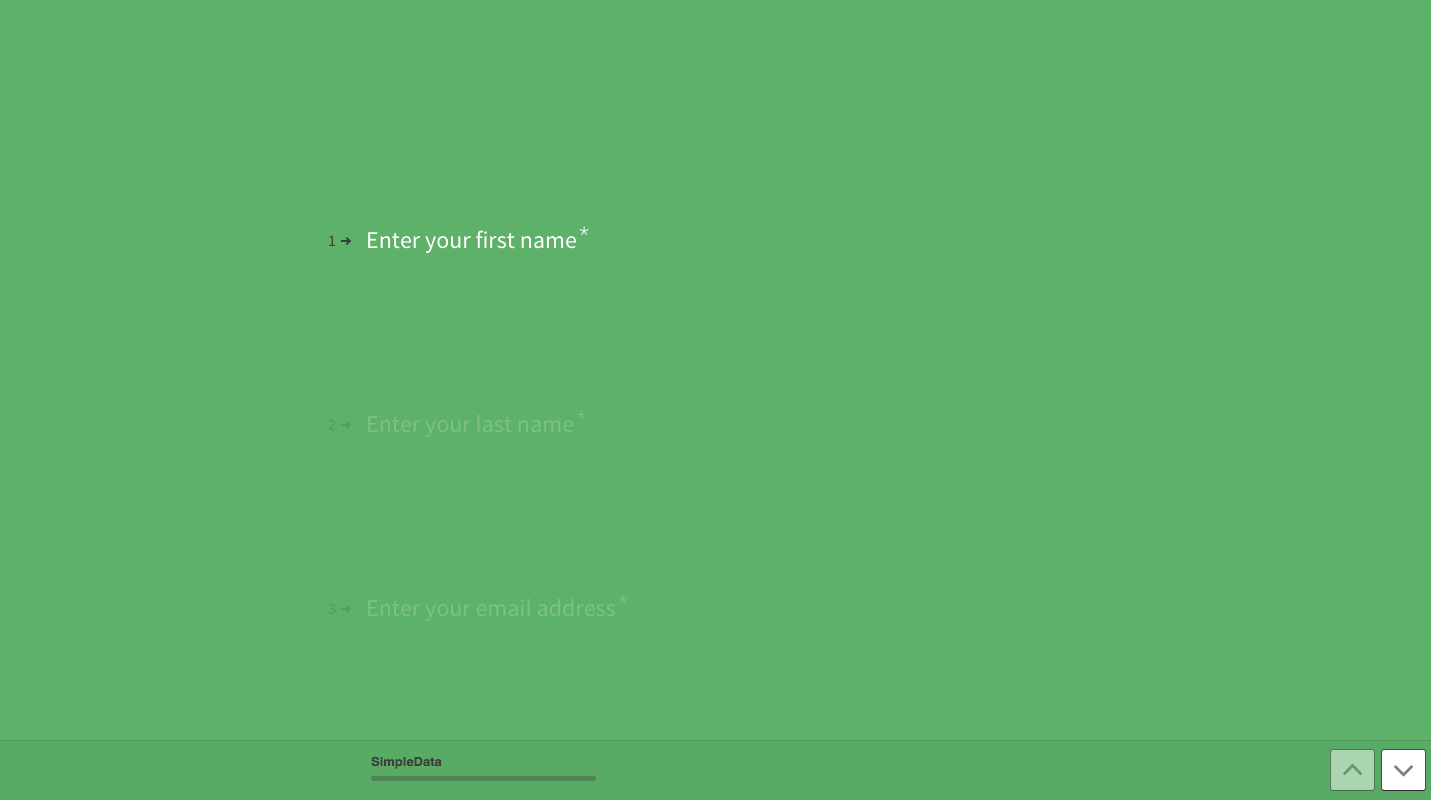
The best startups come from solving a problem the founder has experienced—and that's how Michael Thomas got the idea for his company, SimpleData. After spending one too many hours trying to find prospective customers through LinkedIn and manually emailing them, he decided to build his own solution.
One problem though: Thomas isn't a developer. "I started SimpleData knowing that I'm not going to be able to build the product," Thomas says.
So, at first, everything was very manual. Each new customer required a 30-minute sales call, after which Thomas would hand-write a profile document and start finding prospects. But not everyone likes sales calls. "I always fear being hit up by a salesperson when I sign up for a form," Thomas says. And it's tough to scale a business where every sale requires that much personal time.
That's why Thomas began experimenting with Google Drive, Typeform, and Zapier to start his business. "Those three tools became the basis of my company," Thomas says. "They became my product."
It's crazy to be able to build a company on the foundation of other work software products
Michael Thomas
New users would fill out a form, and Zapier would create a Google Docs document as an automatically generated profile of the customer's needs. "It was like a profile builder without ever building any software," says Thomas. The SimpleData team then takes that data, finds prospects, adds them to a Google Sheets spreadsheet, and emails them to the customer, all in less time than they could have before.
And it's working. Without ever writing a line of code, SimpleData has turned into a business that's simplifying the prospect-finding process that annoyed Thomas at his old job. His team is experimenting with more Zaps to improve their workflow, linking Typeform, Intercom, and SalesforceIQ together to build a marketing automation platform.
Send SMTP emails for new or updated Google Sheets rows
Collect new Typeform responses as rows on Google Sheets
Add new Typeform entries to Google Docs as text files
Even as SimpleData grows, Zapier is still powering the backbone of their operations. "We're going to assume that this is our product development, like our language is Zapier—we program in Zapier," Thomas says. "It's crazy to be able to build a company on the foundation of other work software products, and just packaging them up."
Car Values Disrupts Australian Car Sales with Zapier
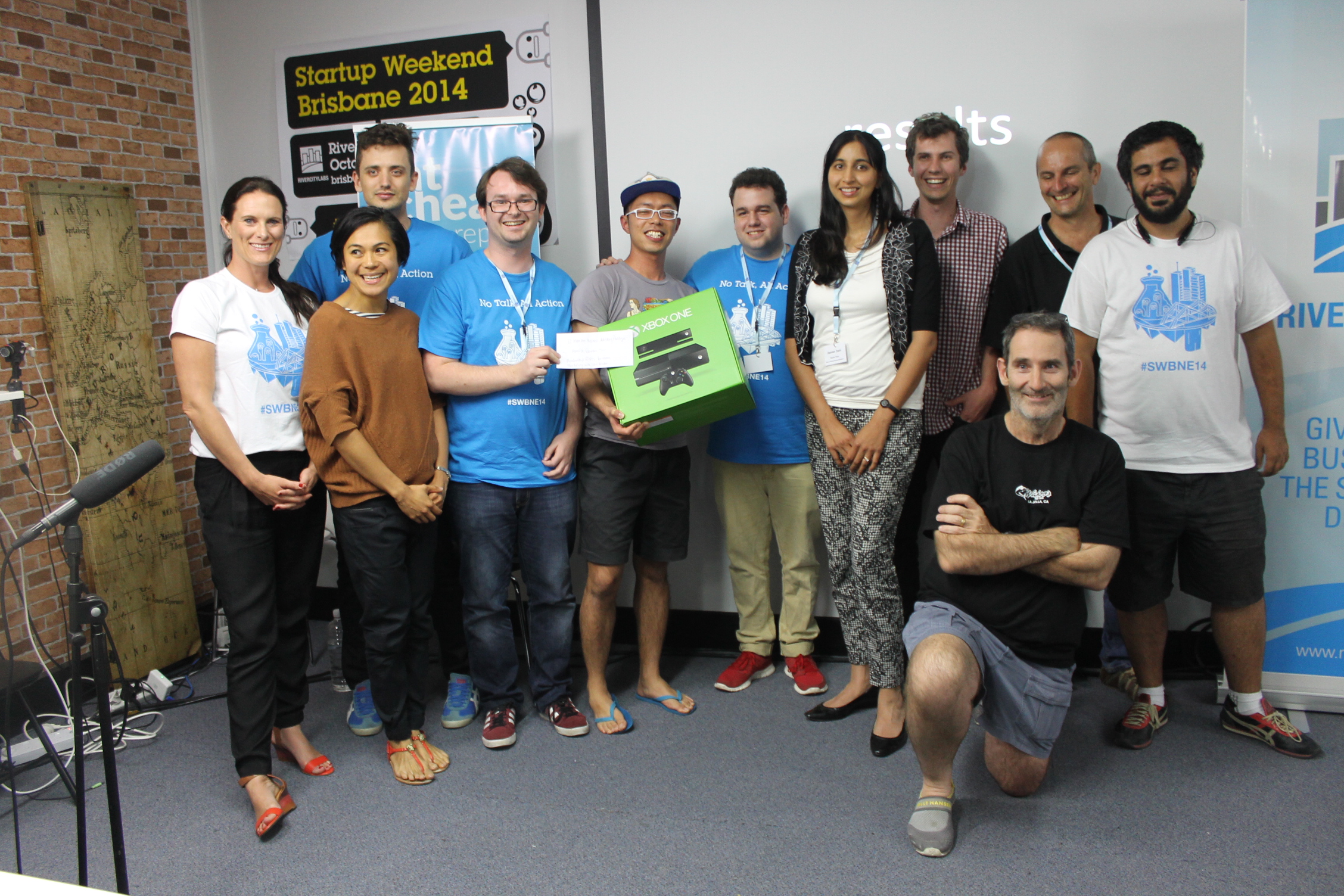
If you've ever price-checked a product on Amazon, you'll instantly understand why Australian car pricing frustrates Christopher Drake. "Everyone gets ripped off with cars," says Drake. "A Porsche in the United States is about $100,000; in Australia that same Porsche is about $300,000. It's crazy."
That same markup sticks to used cars, where the price lists are produced by Car Sales—a company with a near-monopoly on the market and no incentive to tell you the car's actual value.
So, for Brisbane's Startup Weekend in 2014, Drake and his team decided to build Car Values, a tool that helps consumers find more reasonable used vehicle prices.
"We were able to get publicly available information about car pricing and make it easily searchable, but at the very start we obviously didn't have that tech." So, they turned to automation.
Zapier is a good tool to help you figure out what you actually need to build, before you build it.
Christopher Drake
They first used Import.io to parse the car pricing data, and put it in a Google Sheets spreadsheet. Then, they built a Typeform form where customers could send in car pricing inquires, and used Zapier with email automations to send notifications to their team to find car pricing for users. They'd planned to build a Mandrill integration with Zapier to automatically send out car pricing, but for Startup Weekend their team was manually checking prices—the only part of the process not automated.
Send Google Sheets row updates as Twilio SMS texts
Collect new Typeform responses as rows on Google Sheets
Create Mailchimp subscribers from new Typeform responses
Send Mailchimp Transactional emails when new rows are added to Google Sheets
That was enough, though: Drake's team won Startup Weekend Brisbane that year. The project eventually folded, but Drake and his friends continue to launch experimental apps and tools at That Startup Company, using Zapier as a quick way to build out new ideas.
"I've got a tech co-founder," Drake says, "but I hate bugging him for little things that I know I could do myself." Using Zapier at various Startup Weekends, he's added SMS integrations to apps with Twilio, sent out customized emails to users with Typeform and Mandrill, and built a marketing tool to monitor using Zapier and Google Sheets. Most recently, he and his team built a Tinder bot using Typeform, Google Sheets, , and Twilio—one that's actually working and making connections automatically.
"Zapier is a good tool to help you figure out what you actually need to build, before you build it," says Drake. "You could spend hours building something and then realize that no one actually cares, I would rather use something like Zapier to connect stuff together and then just go from there."
And with a few projects under way, Zapier lets That Startup Company's team have fun and validate their ideas before having to involved their tech co-founder.
Taylor Personalizes Travel Recommendations with Zapier
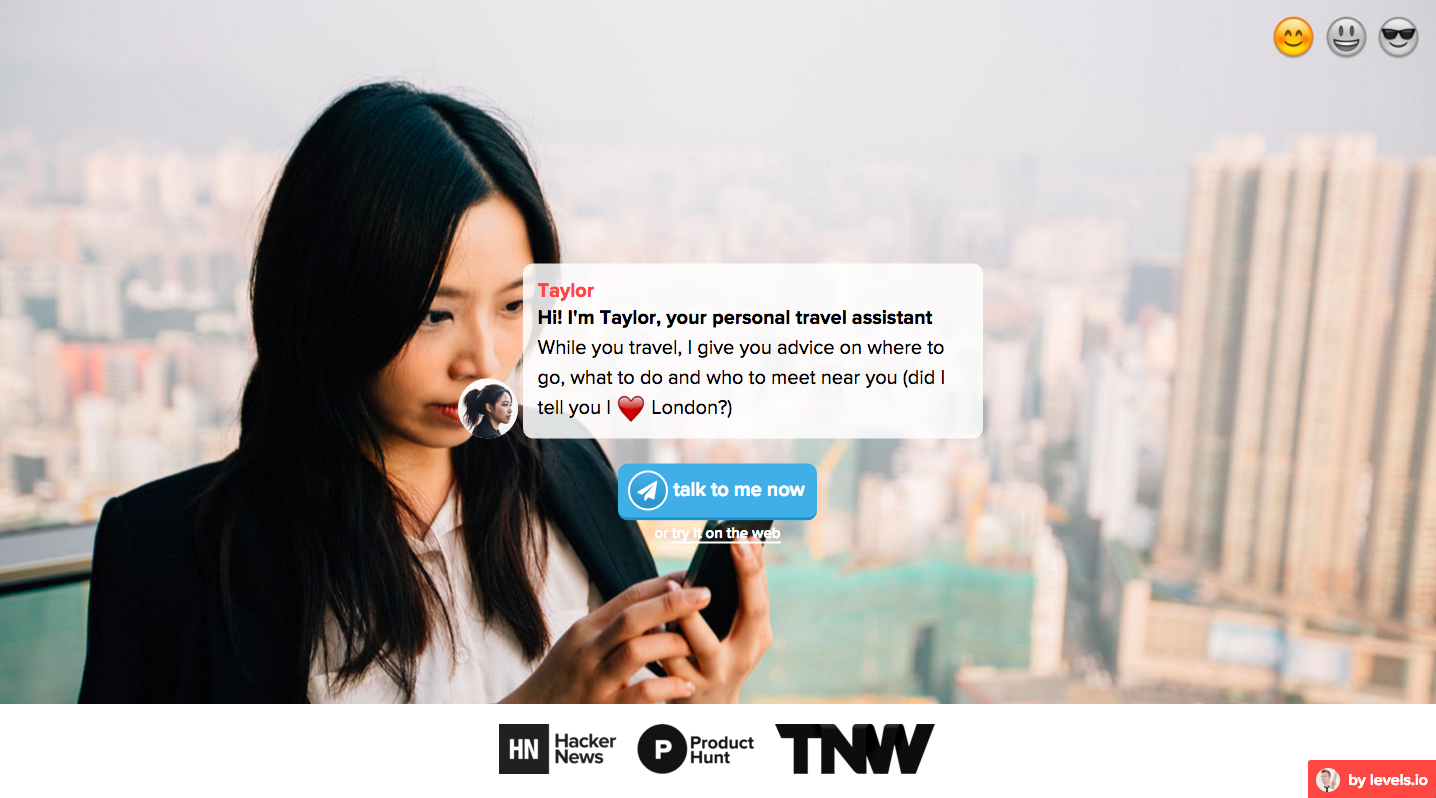
Pieter Levels has been building one startup per month in 2015. That project hasn't just made novelty apps—it's already led to some breakout successes like Nomad List. Levels' rapid development pace requires simplifying as much as possible, using other apps and integrations to get more done.
"I work way less than people think," Levels told ThinkApps' Tricina Elliker. "Most of the stuff is automated and just runs itself."
For one of his many projects this year, Levels is building Taylor, an automated travel assistant that runs on the Telegram messaging service. It's part automation, part Fancy Hands-based personal assistants—and it's tied together with a Typeform form and Zapier, using a custom developer integration Levels built on his own.
"You can get pretty far with an MVP using Typeform, Zapier, and FancyHands," says Levels on Twitter. So much so, he's now writing a book, MAKE, that is focused on "how to build something that solves your problem, even if you can't code, by using off-the-shelf tools."
Need custom integrations to pull off your own Zapier-powered app? All you need is an API, and you can add your own from the Zapier Developer Platform.
Kollecto Finds the Art You'll Love with Zapier

Ever wondered how to find art that'd look perfect in your office? Or ever wondered what it'd take to build a startup that's brought in over $12,000 in revenue by helping people find art?
All the latter takes, it turns out, is a handful of off-the-shelf apps, linked together with Zapier. Founder Tara Reed started Kollecto, an art recommendation app, using website builder Strikingly, a Typeform form, emails, to manage projects, along with and powered payments.
"When I started Kollecto, I envisioned a tech-heavy platform for matching first-time collectors with an art advisor," Reed said on her blog. So instead, she tried using existing apps to build an initial version of the product that would be easy to modify and tweak over time.
Building without code has given me full flexibility to iterate on the Kollecto UX without spending pre-mature time or money on tech.
Tara Reed
The Kollecto experience starts with the Typeform form, where customers select their favorite types of art and enter their contact details. Zapier then sends that data to a Google Sheets spreadsheet, where Google Scripts help categorize users and show which art types to recommend.
Art advisors on the Kollecto team then add art to a survey, and their Campaign Monitor emails include a customized link to the survey that sends each customer to the new art that'd fit their profile based on the Google Sheets data.
Collect new Typeform responses as rows on Google Sheets
"As a non-technical founder, building without code has given me full flexibility to iterate on the Kollecto UX without spending pre-mature time or money on tech," Reed says. "Building this way lets us spare ourselves of all the technical debt of writing code for features that our users don’t actually want.
"Spending 0% of time on coding and 100% of time learning what my customers want has been really rewarding."
After dozens of pivots and tweaks to the original concept, Kollecto has turned into a business—one powered by pre-made apps tied together in unique ways, making it affordable for anyone to get personalized art recommendations.
Pariveda Solutions Redesigns Reddit's Infrastructure with Zapier
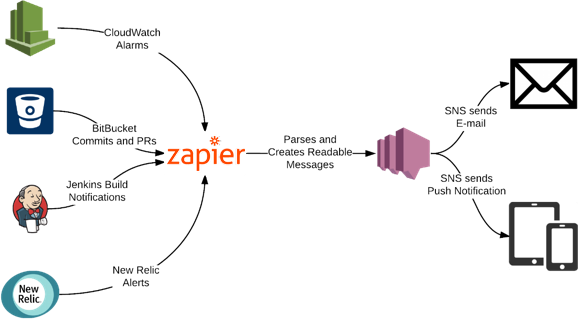
It's annoying enough to get notifications from a half-dozen different apps at the same time, and then have to figure out which message came from where. Now, imagine if each of those messages were mission-critical alerts from your server, telling you when the website is down, code is changed, or something is broken.
Worse still: imagine if each app didn't have real notifications, so you had to check a half-dozen apps just to see if everything's ok.
That's the problem facing Pariveda Solutions team members Luis Lafer-Sousa and his colleague Matthew Baumgartner during their company's annual internal hackathon. This year's challenge focused on DevOps for Reddit's infrastructure.
"Reddit was chosen since the codebase is open source and very complex," explains team member Luis Lafer-Sousa. Each team had to pick a challenge, so Lafer-Sousa and his coworker Matthew Baumgartner chose to focus on the administrative side of Reddit—where managing notifications from various tools is a crucial part of the job.
Reddit uses a wide range of technologies, so they first built a database that pulls data from each tool together into a Xamarin-based mobile app. Then, it was time to tackle notifications—and that's where Zapier comes in.
There are a lot of really useful applications around alerts, and Zapier is key to the whole integration.
Luis Lafer-Sousa
"Alerting tends to be done by emails that pile up and may be easily missed at the moment of a crisis," Lafer-Sousa says. "Originally we thought this was way too large an undertaking to do on our own, until we found Zapier."
Within minutes, Lafer-Sousa's team connected their , , , and notifications to their mobile app, which sent push notifications via .
Get an Amazon SNS notification for new Amazon CloudWatch alarms
Get Jenkins job status notifications via Amazon SNS
Now, with all of the notifications coming into one place, it's easy to keep track of them. Lafer-Sousa's app turns each notification from Amazon SNS into a concise notification in their mobile app. All the different messages from various services were turned into just one stream of simplified notifications, giving users a single app where they could find out everything they needed to know about a Reddit install.
It didn't change the way the Reddit software stack worked, but it absolutely could change how an IT team managed the stack. As Lafer-Sousa said, "There a lot of really useful applications around alerts, and Zapier is key to the whole integration."
These stories are far from the only ones—there are many more like them, building unique businesses and winning hackathons without writing a line of code, or making the code they do write go further with smart automations.
The Driven Computing team at Carnegie Mellon, for example, won Ford's EV Hackathon in 2013 using Zapier. They added a Zapier integration to Ford's OpenXC API, then used it to automatically send SMS messages, check into social networks and more based on where the car is located.
There are dozens of other examples, from a developer hiring system to a shuttle bus service to a handmade crowdfunding system, all built using Zapier and a form. They're so powerful together, the Typeform team has even run a hackathon for non-developers where every startup idea was powered by a form and tools like Zapier.

Perhaps it's not such a crazy idea, building your company with other tools. After all, your iPhone includes open source software built by various teams around the world, and your local restaurant is likely using pre-made ketchup and pre-ground flour instead of doing everything by hand. It's specialization at its best: you do the thing you're best at, others do the things they're best at, and we all get better things.
So how can you build your next great startup idea any engineering overhead?
Break Down Your Idea Into Parts
It is crazy to be able to build a company on the foundation of a lot of other work software products
Michael Thomas
Remember in math class as a kid, when you'd have to figure out the distance to Bob's house if his house was 2km away from the school and the school was 3km from the store and the store was 4km from your house?
Solving such problems means breaking them down into steps, solving each part, then putting the whole together. And so it is with turning your idea into an app.
Start by thinking through what your app will do. What data will it collect, how will it collect it, and what will you do with the data? What notifications do you need? What final products do you need to ship, or what records do you need to keep?
List each of these things, and how they're related. Now, you need to find an app for each thing, and then rely on Zapier to create a relationship between those apps.
This is when you might make a sketch of your app, perhaps when you'd pull out a prototyping tool in another hackathon. But instead, you'll now pick apps that work in each part of your app, and start immediately building your idea into reality.
Find the Right Apps for Each Job
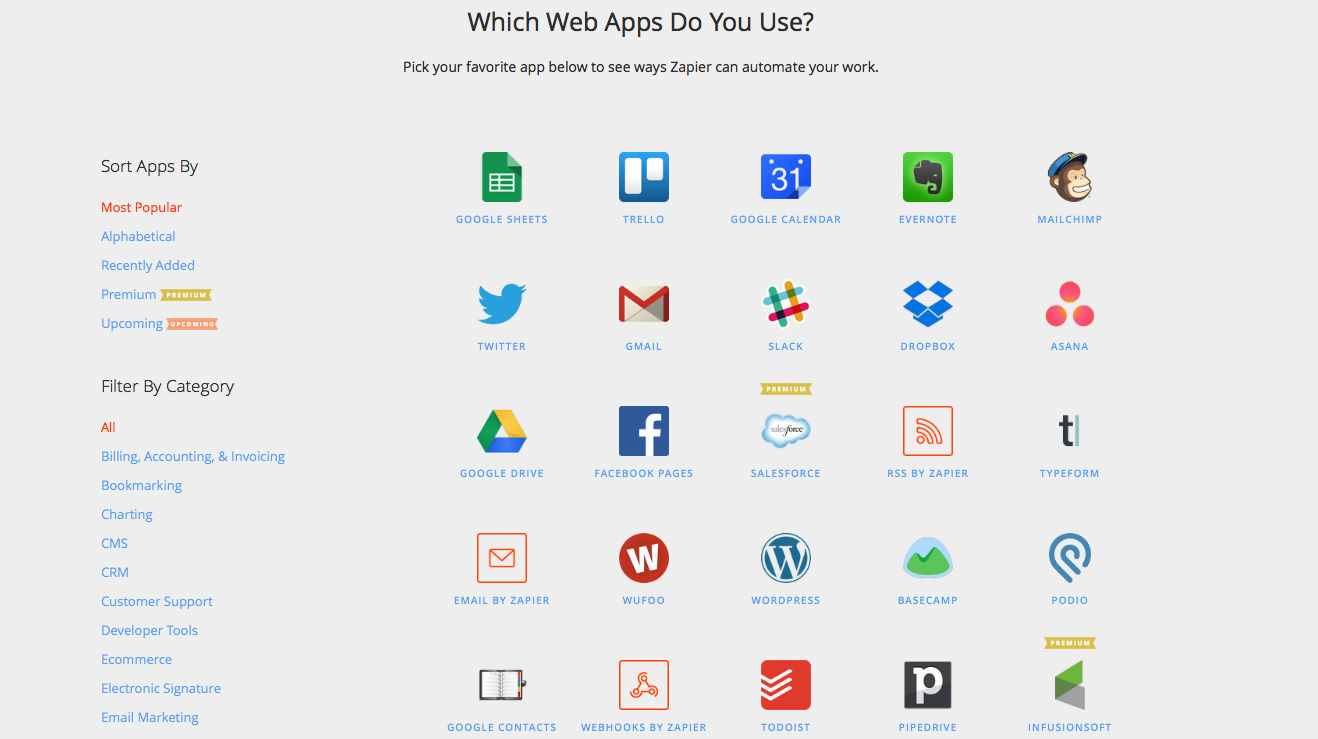
Once you've identified what you need in your app, it's time to find a tool for each feature. A form is one of the easiest building blocks to start off with: it can be your app's user interface, the buttons people click and the fields they fill out to use your app. Or you could opt for an email as your user interface, as Kollecto does.
Then, you'll need to store your data, perhaps in a spreadsheet or database. Messaging apps might help you notify your team of new data, while file management apps like or might help you create documents and send the data to others.
Think through each thing you need to do, and then research an app that will fit the bill. Be creative: A spreadsheet or plain text file can be infinitely flexible, as can database-powered apps like or Salesforce.
Then, it's time to pick the right app for each category. You obviously won't build a business on top of Candy Crush, but you could use Google Sheets, Excel, Salesforce, a MySQL database, or any number of other tools to store your customer data.
Which one should you use?
If you already have a favorite form builder, spreadsheet, email marketing app, or any other type of app, odds are you should just use it. Knowing the ins-and-outs of an app gives you a head start on prototyping.
Here are a few resources to help you get started:
CRM: The best CRM apps and marketing automation tools
Email: The best newsletter apps, drip email tools, and transactional email services
Customer Support: The best customer support apps
Forms: The best online form builders and survey tools
Databases: The best simple database tools
Messaging: The best team chat apps
Connect Your Apps with Automation
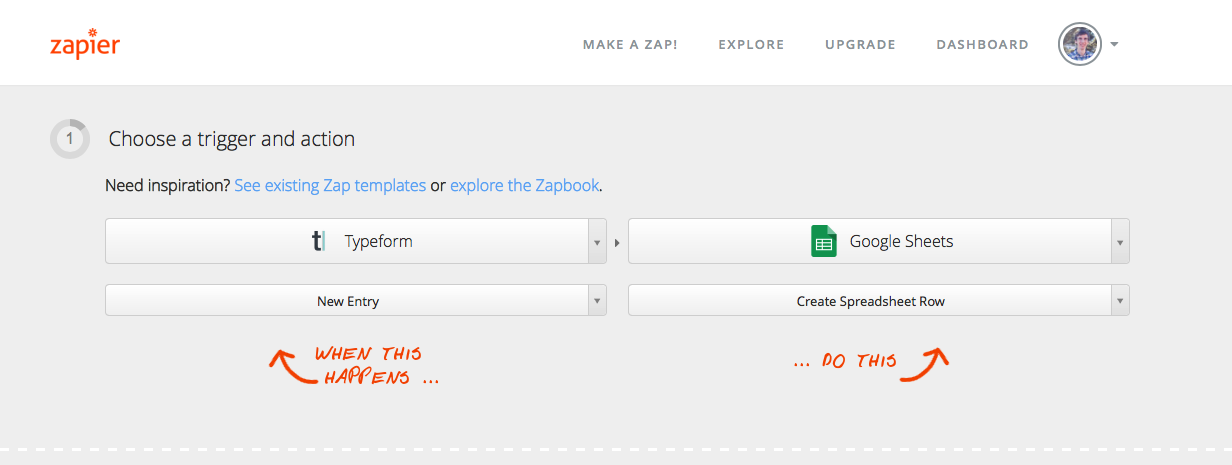
Then, it's time to code your app—only this time, you'll be using Zapier as your programming language. Using the plan you laid out at the first step, link each of your apps together with a Zapier automation.
You might connect your form to a spreadsheet to log your data. Then a second Zap could watch that spreadsheet for new entries and send SMS messages to your team when data is added. Perhaps a third Zap could send a customized email back to your customer with a spreadsheet to email Zap, thanking them for the order or sending along the info they requested.
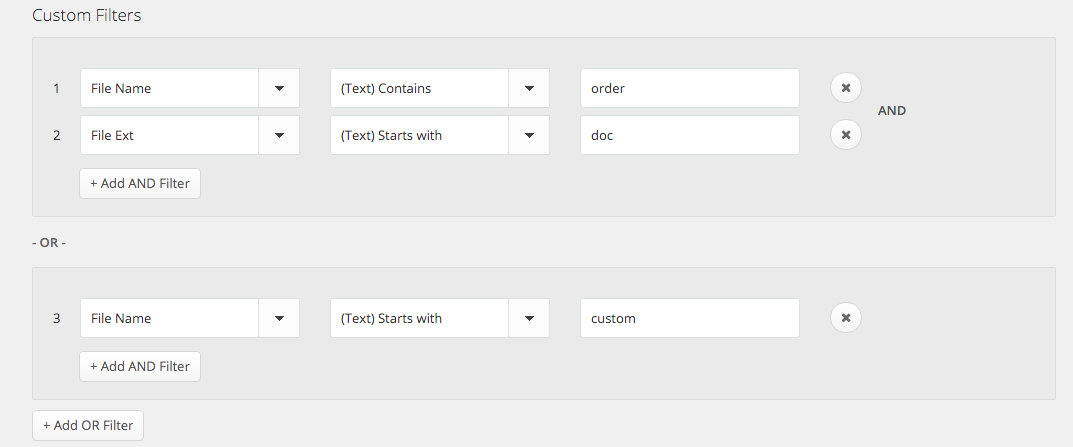
Zapier's best hidden feature is filters—they'll let you watch your data for specific keywords or values, to make your automations even more customized. Say you have one spreadsheet for people who ordered Product A, and a second spreadsheet for those who ordered Product B. A Zapier filter could watch for orders that mention Product A, and save them to the correct spreadsheet, while a second Zap saves the Product B mentions to another spreadsheet.
You can also use Zapier's Email Parser to pull data out of emails, to have your Zap pause before it runs, or Named Variables to store data in notes and documents and easily reuse it later in other Zapier integrations.
Rapidly Iterate
You've just built an app without coding, and for all intents and purposes, it's a real app.
So time for version 2. And 3. And 347. Time to iterate this app to death, and make it as great as it can be.
You could spend hours building something and then realize that no one actually cares. I would rather use something like Zapier to connect stuff together and then just go from there.
Christopher Drake
Once you've caught your breath, try adding filters and see how much more powerful your app can be. Or maybe you want to build the new feature that your users are begging for with one of the integrations in the Zapier app directory.
Never stop, never settle. As Bart Buerman said, "You can always tweak something, if it doesn't work you're not exactly terribly invested." That's why you're using Zapier to build your prototype idea into an app in the first place.
"Remember that at least a thousand people have every great idea," wrote Y Combinator's Sam Altman in his Startup Playbook. "One of them actually becomes successful. The difference comes down to execution."
For some new businesses, you'll need to hand-code your software, rent a real building, and build something from scratch. But often, you can get started without any of that.
Instead, you can use an app to gather data, another app to store it and put it to work, and something else to send your product or info back to customers. Zapier can tie it all together with just a few minutes of tweaking, so you can execute faster than anyone else.
And it just might work so well that you'll be able to build a full business without worrying about your tech infrastructure. For that, you've got Zapier.
Download our eBook on how to build a prototype.
Credits: Blueprints photo courtesy Forgemind on Flickr. Presidential Innovation Fellows workplace photo courtesy Pete Souza of The White House on Flickr. Car Values team photo courtesy River City Labs, Ingredients photo courtesy Gavin Tapp on Flickr.





